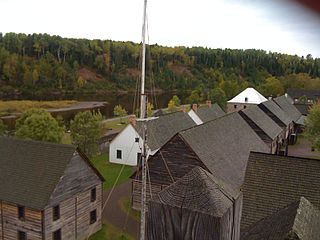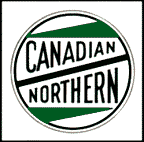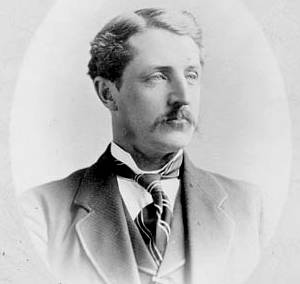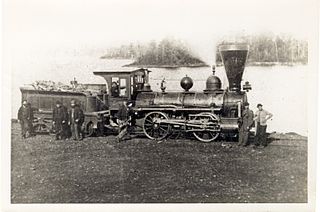George Thomas Marks (August 31, 1856 – May 21, 1907) was a businessman and politician in Ontario, Canada. He was mayor of Port Arthur, Ontario (later Thunder Bay) from 1893 to 1899.

Ontario is one of the 13 provinces and territories of Canada and is located in east-central Canada. It is Canada's most populous province accounting for 38.3 percent of the country's population, and is the second-largest province in total area. Ontario is fourth-largest jurisdiction in total area when the territories of the Northwest Territories and Nunavut are included. It is home to the nation's capital city, Ottawa, and the nation's most populous city, Toronto, which is also Ontario's provincial capital.
Port Arthur was a city in Northern Ontario, Canada, located on Lake Superior. In January 1970 it amalgamated with Fort William and the townships of Neebing and McIntyre to form the city of Thunder Bay.

Thunder Bay is a city in, and the seat of, Thunder Bay District, Ontario, Canada. It is the most populous municipality in Northwestern Ontario with a population of 107,909 as of the Canada 2016 Census, and the second most populous in Northern Ontario after Greater Sudbury. Located on Lake Superior, the census metropolitan area of Thunder Bay has a population of 121,621, and consists of the city of Thunder Bay, the municipalities of Oliver Paipoonge and Neebing, the townships of Shuniah, Conmee, O'Connor, and Gillies, and the Fort William First Nation.
He was born in Bruce Mines, Canada West, the son of George Marks and Mary Traynor, and was educated at Trinity College School in Port Hope. In 1873, he settled in Prince Arthur's Landing (later Port Arthur). He worked in various companies owned by his uncle Thomas Marks, before becoming a partner in Thomas Marks and Company in 1884. Marks was married twice: to Jennie Laird in 1881 and to Mary Elizabeth Rowan in 1898. Marks was treasurer and councillor for Shuniah and then served on Port Arthur town council from 1885 to 1887. He established a municipal electric-lighting plant and helped consolidate town debt associated with earlier public works projects. He also supported a power generation plan for the Kaministiquia River and helped promote the Ontario and Rainy River Railway. In 1894, he became a partner in the St Lawrence and Chicago Steam Navigation Company and in 1903, with others, formed the Canadian North West Steamship Company and Neebing Navigation Limited. He was also vice-president of the Dominion Marine Association. He was defeated when he ran for reelection as mayor in 1900. Marks ran unsuccessfully for a seat in the House of Commons in 1904. He was one of the earliest proponents for amalgamation of Port Arthur and Fort William. Marks died in Toronto at the age of 50.

Port Hope is a municipality in Southern Ontario, Canada, about 109 kilometres (68 mi) east of Toronto and about 159 kilometres (99 mi) west of Kingston. It is located at the mouth of the Ganaraska River on the north shore of Lake Ontario, in the west end of Northumberland County. Port Hope's nearest urban neighbour is the City of Oshawa. Since 1868, the town has been home to Trinity College School.
Thomas Marks was an Irish-born Canadian businessman who served as the first mayor of Port Arthur, Ontario.

The Kaministiquia River is a river which flows into western Lake Superior at the city of Thunder Bay, Ontario. Kaministiquia (Gaa-ministigweyaa) is an Ojibwe word meaning "(river) with islands" due to two large islands at the mouth of the river. The delta has three branches or outlets, reflected on early North American maps in French as "les trois rivières" : the southernmost is known as the Mission River, the central branch as the McKellar River, and the northernmost branch as the Kaministiquia. Residents of the region commonly refer to the river as the Kam River.








